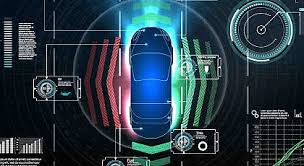How Collision Avoidance Systems Are Saving Lives

Collision avoidance systems are revolutionizing road safety, reducing accidents, and saving lives every day.
What Are Collision Avoidance Systems?
Collision avoidance systems are a subset of advanced driver assistance systems (ADAS) designed to prevent or mitigate the severity of traffic accidents. These systems use a combination of sensors, cameras, radar, and other technologies to detect potential hazards on the road and take corrective action.
By alerting the driver, applying the brakes, or taking evasive maneuvers, collision avoidance systems help in reducing the likelihood of accidents. They can detect various obstacles, including other vehicles, pedestrians, and even animals, making roads safer for everyone.
The Technology Behind Collision Avoidance
The technology powering collision avoidance systems is incredibly sophisticated. At its core, it involves a network of sensors and cameras that constantly monitor the vehicle's surroundings. These sensors can include LiDAR, radar, ultrasonic sensors, and high-definition cameras.
Advanced algorithms process the data collected by these sensors in real-time to identify potential threats. Machine learning and artificial intelligence play crucial roles in improving the system's accuracy and response time. When a threat is detected, the system can issue warnings to the driver or take action autonomously, such as braking or steering the vehicle to avoid a collision.
Real-World Impact: Statistics and Case Studies
The real-world impact of collision avoidance systems is evident in various studies and statistics. According to the Insurance Institute for Highway Safety (IIHS), vehicles equipped with front crash prevention systems have significantly lower rates of rear-end collisions.
Case studies have shown that these systems can reduce collision rates by up to 50%, saving thousands of lives and preventing countless injuries annually. For instance, a study by the National Highway Traffic Safety Administration (NHTSA) found that automatic emergency braking systems alone could prevent nearly 20,000 crashes each year.
Future Innovations in Collision Avoidance Systems
The future of collision avoidance systems is promising, with ongoing advancements aimed at making these systems even more effective. One area of innovation is the integration of V2X (Vehicle-to-Everything) communication, which allows vehicles to communicate with each other and with infrastructure like traffic lights and road signs.
Another exciting development is the use of augmented reality (AR) to provide drivers with real-time information about potential hazards. Additionally, improvements in AI and machine learning algorithms are expected to make collision avoidance systems more accurate and capable of handling a wider range of scenarios.
How to Choose the Right Collision Avoidance System for Your Vehicle
Choosing the right collision avoidance system for your vehicle depends on several factors, including your driving habits, the type of vehicle you own, and your budget. It's essential to consider the features offered by different systems, such as automatic emergency braking, lane departure warnings, and pedestrian detection.
Consulting with a professional or referring to consumer reviews and ratings can also help in making an informed decision. Additionally, some vehicles come with factory-installed systems, while aftermarket options are available for older models. Weighing the pros and cons of each can guide you in selecting the most suitable system for your safety needs.

 Loading..
Loading..